Personas for Publishers
There's been a dramatic shift in the media environment. With an overwhelming amount of diverse content, people have a choice in what they read, listen to, or watch. Audience-driven content, paired with good journalism, is paramount for success in digital journalism.
Persona development brings about new thinking in the newsroom. It's a research process that brings a human-centered approach to developing news products. In 2022, we worked with a small group of journalists to develop audience personas. We focused on Central Asian migrants living in Russia. The research painted a picture of migrants’ lived experience, digital reality, and information needs.
In this article, we'll share:
The Migrant Personas: the personas that were the outcome of the research; and
The Persona Playbook for Publishers: a handbook for any editorial or design team to replicate this research and persona development method
Please note that the playbook is crafted for news outlets operating in repressive media environments. In such regions, it's common for governments to control the internet. For example, to block websites and social media platforms and to throttle connections. Some governments watch (or surveil) what people are consuming. And even shut the internet down completely during politically sensitive times.
Migrant Personas
An outcome of qualitative research, the migrant personas reflect the lived experience of real Central Asian migrants living in Russia. They were informed by both primary and secondary research including: interviews with migrants, newspaper articles, academic papers and ethnographic research reports. They were last updated in October 2022.
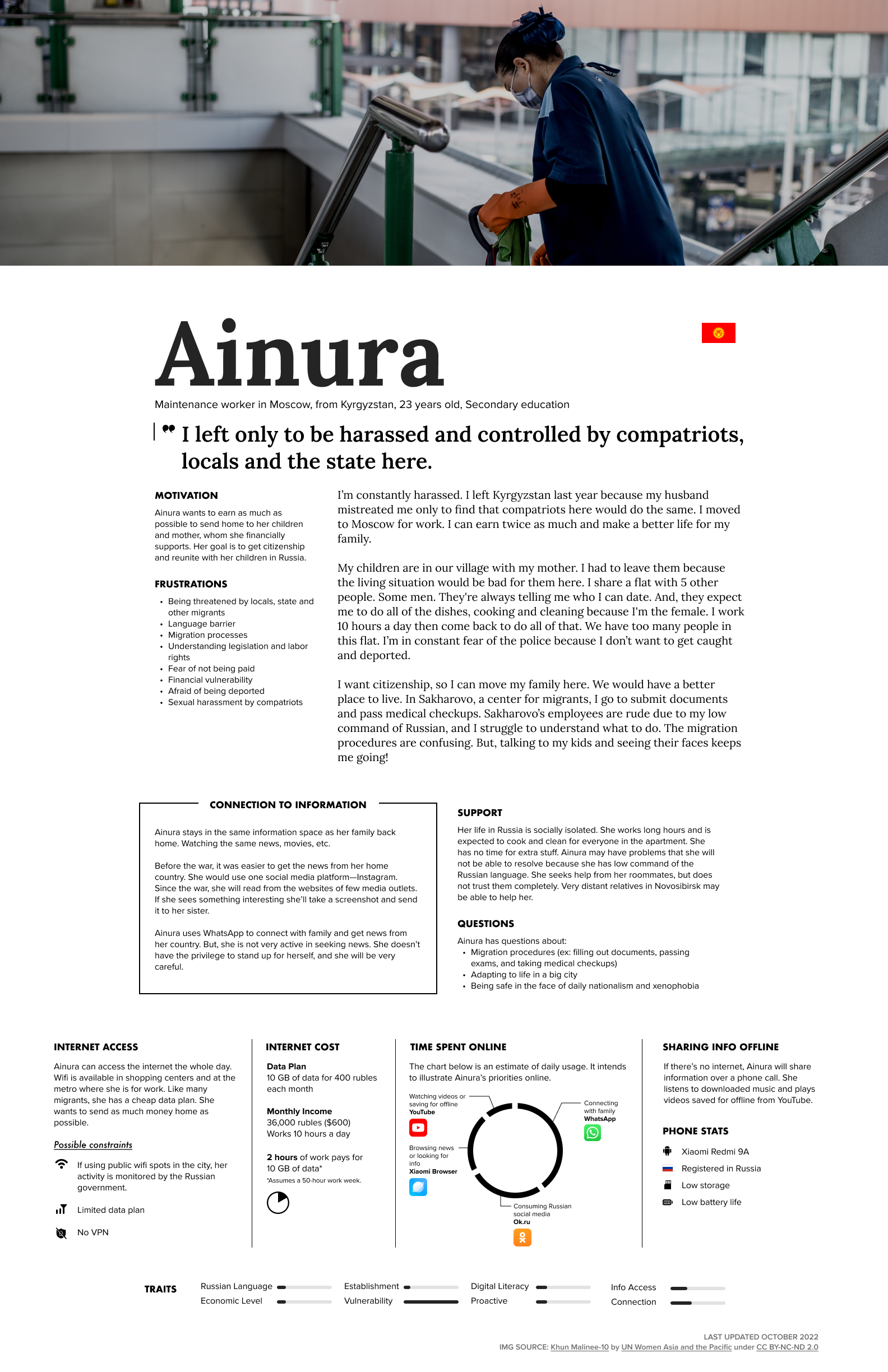
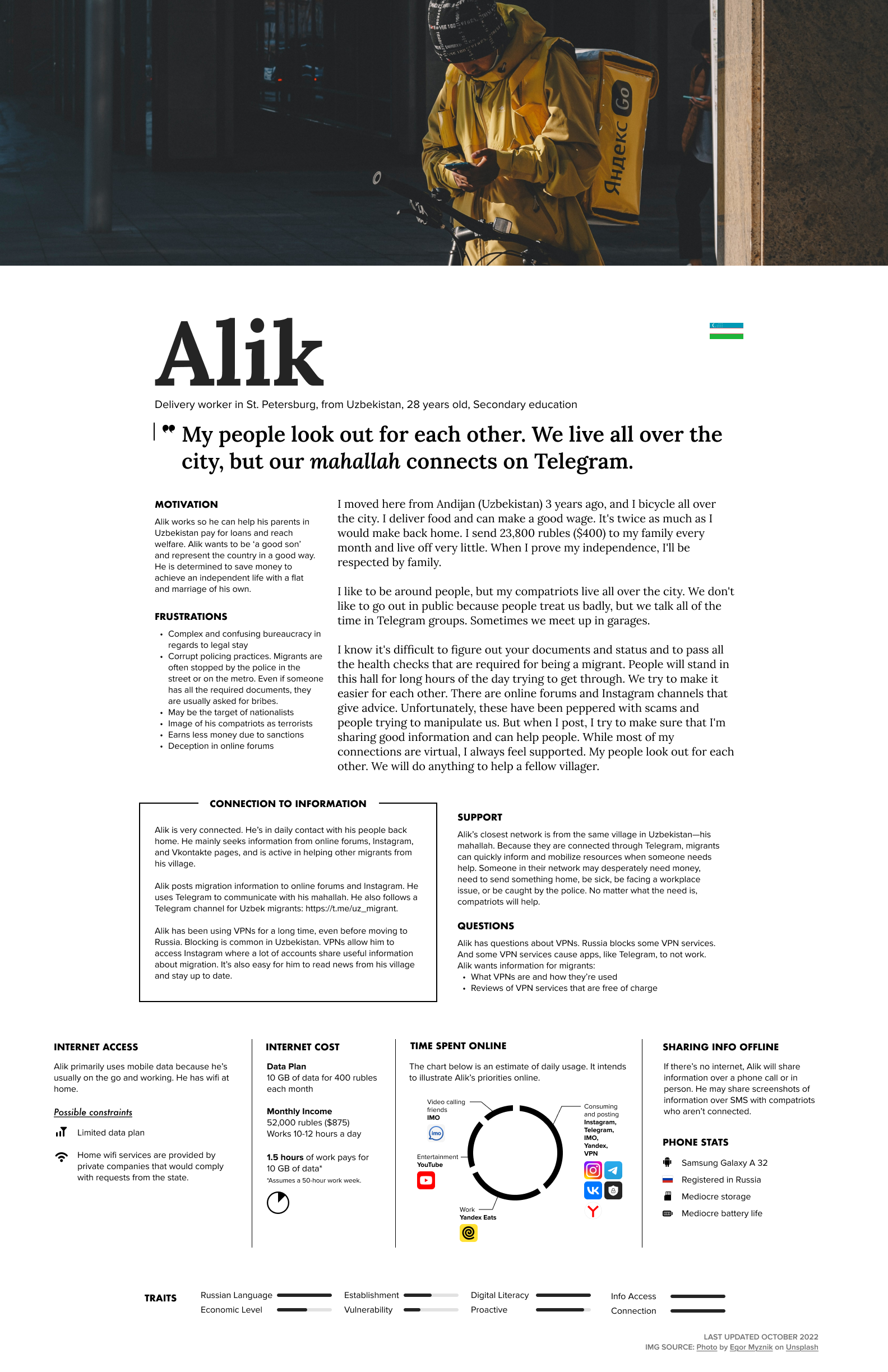
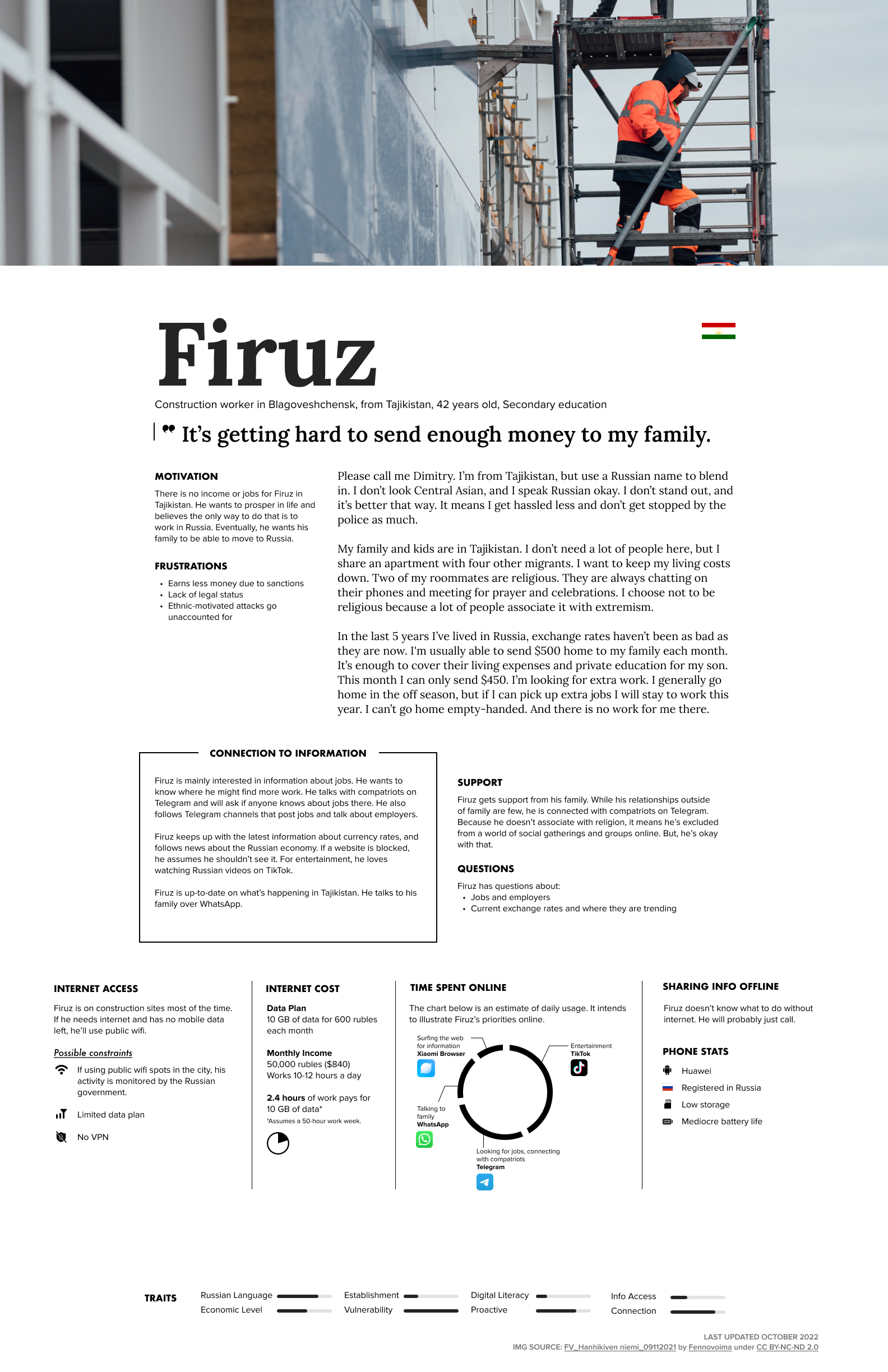
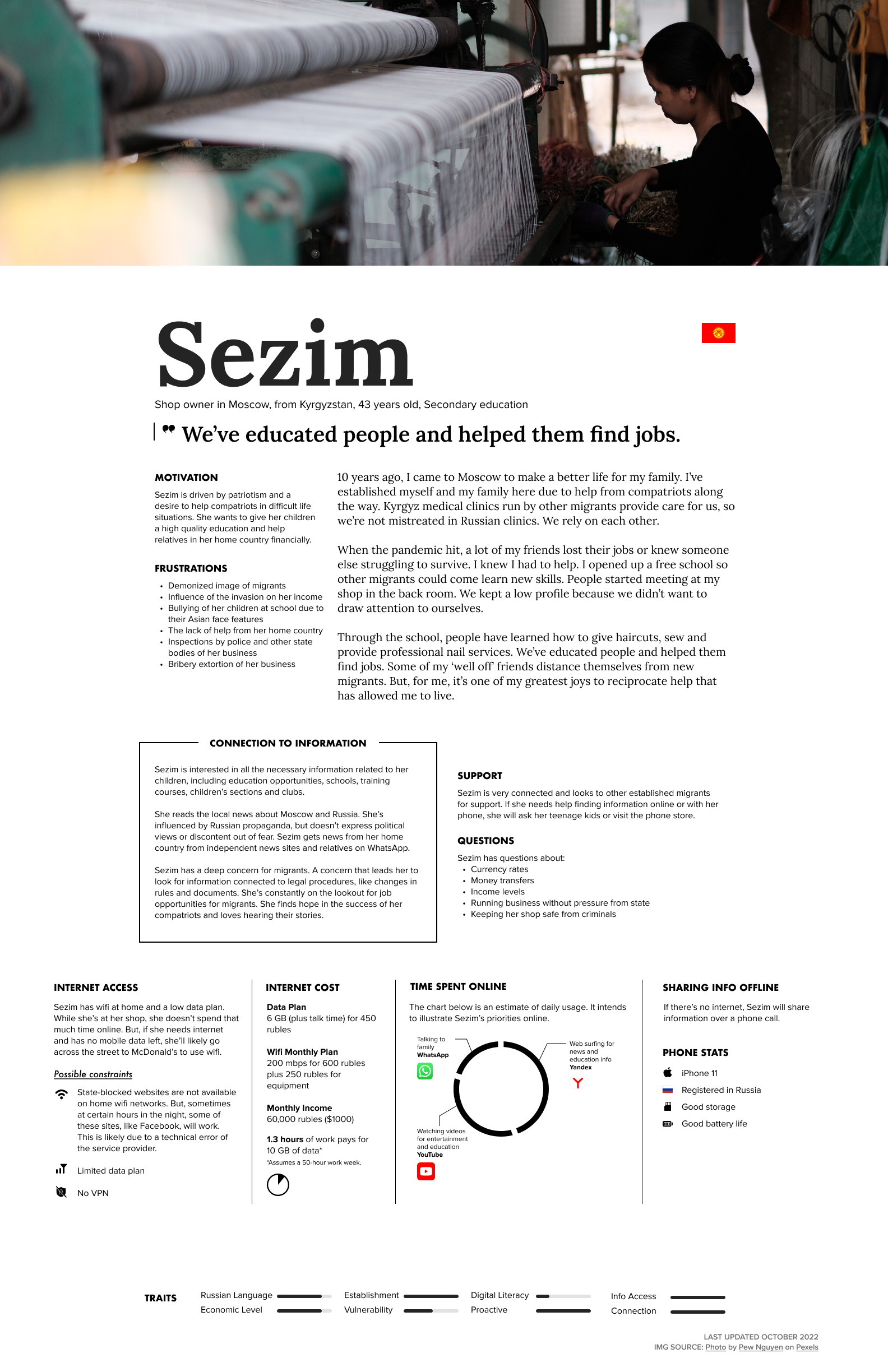
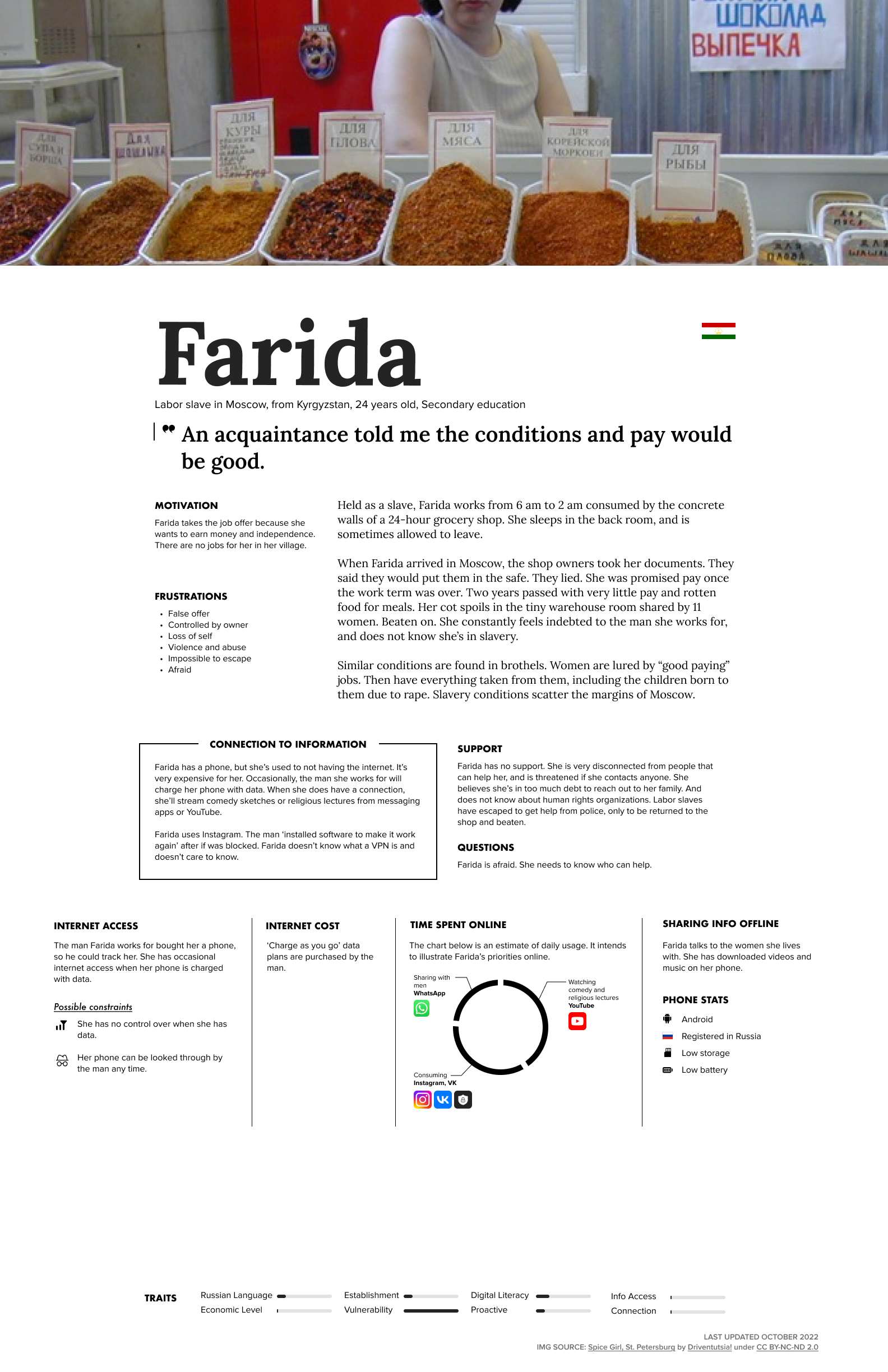
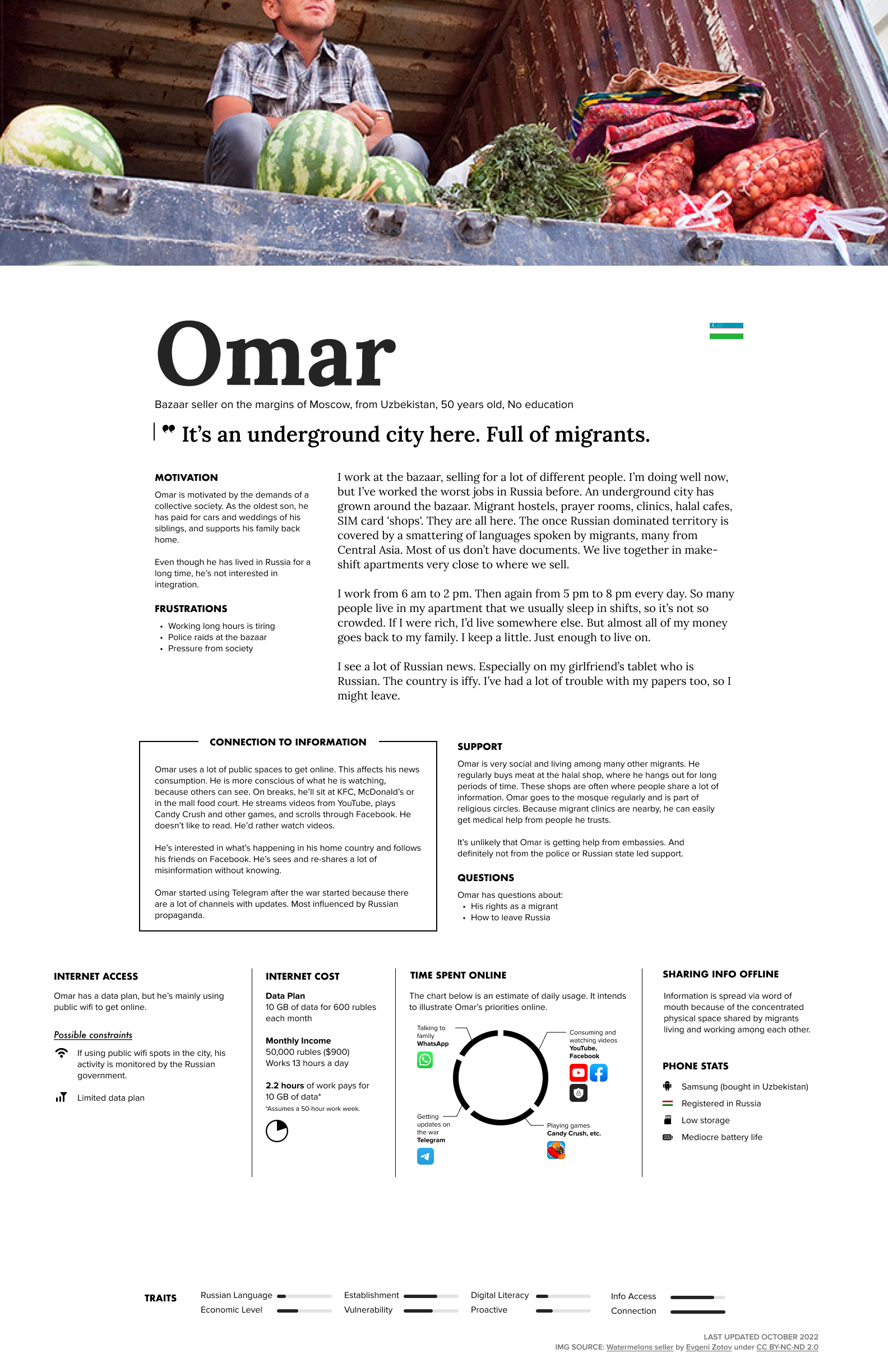
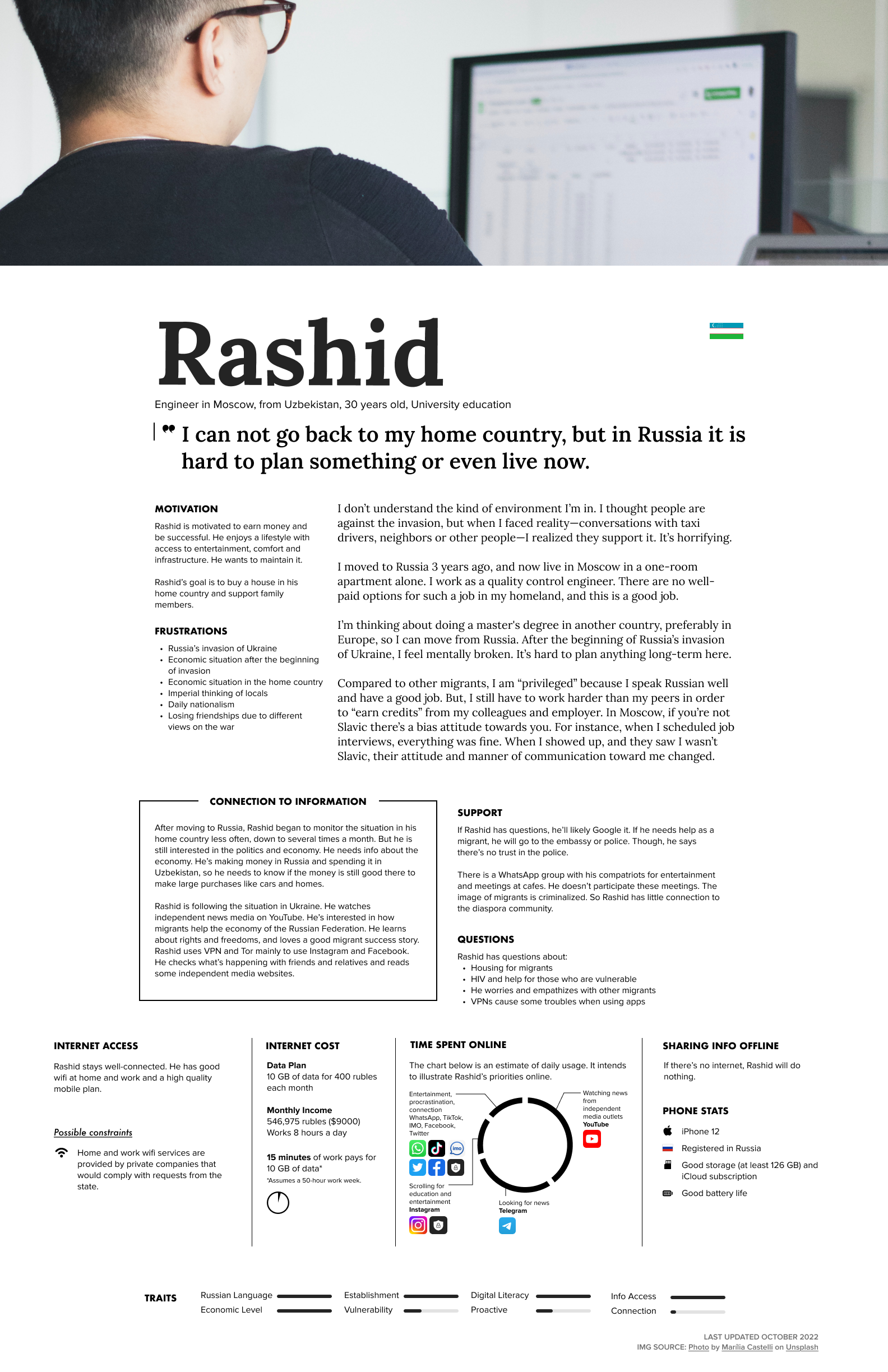
Overview of Personas:
Ainura, the female migrant: Ainura tells about the experience of female migrants living in Russia. She is among the most vulnerable because she is a woman and doesn’t speak Russian. Ainura is isolated and has a difficult time keeping up with news since Facebook was blocked. Ainura’s story reveals the societal pressures on women and harassment they are subject to on a regular basis.
Alik, the communicator: Digitally-mediated communication connects Alik to a reliable community of support, where he is active in helping people. Coming from Uzbekistan, Alik has been a long-time user of VPNs and is able to use blocked apps regularly. Alik’s story surfaces issues of corrupt policing and the risks of deception in online communities.
Sezim, a source of care: Sezim has lived in Russia for many years with her family. She represents diaspora leaders who actively help other migrants by providing in-person support. She doesn’t spend that much time online, and is more interested in using her phone for phone calls. Sezim’s story includes points about the issues parents and shop owners face on a regular basis.
Firuz, the lone worker: Firuz tells of migrants working in the Far East. He isn’t very connected to the migrant community at large, and tends to go back home in the off season. Due to seasonal work, Firuz occupies 2 information spheres: in Russia and in his home country. His story touches on the effect sanctions have had on migrant workers and ethnic-motivated attacks.
Omar, the bazaar dweller: Omar represents people living in ethnic enclaves. While it's common for migrants in Russia to be very dispersed across the city (due to the need to be close to work), bazaar workers live and work in a unique condition. They are surrounded by other migrants. Information sharing often happens in person.
Farida, the hostage to man: Farida represents the story of individuals who get lured into slavery by being promised a good job with good pay. Her story represents a case where information access is highly restricted and monitored not only by the state, but also by men. She has few people who can help her.
Rashid, the outlier: Rashid is highly-skilled and does not identify as a migrant. He is disconnected from online migrant communities and meetups. Rashid represents a sector of the audience who enjoys a certain level of comfort and education. He is unrestricted in his access to information and actively seeks news about the war.
Persona Playbook for Publishers
Crafted for newsrooms, this playbook outlines a process to help publishers answer the question: How can we reach people in a modern, ever-changing, censored environment?
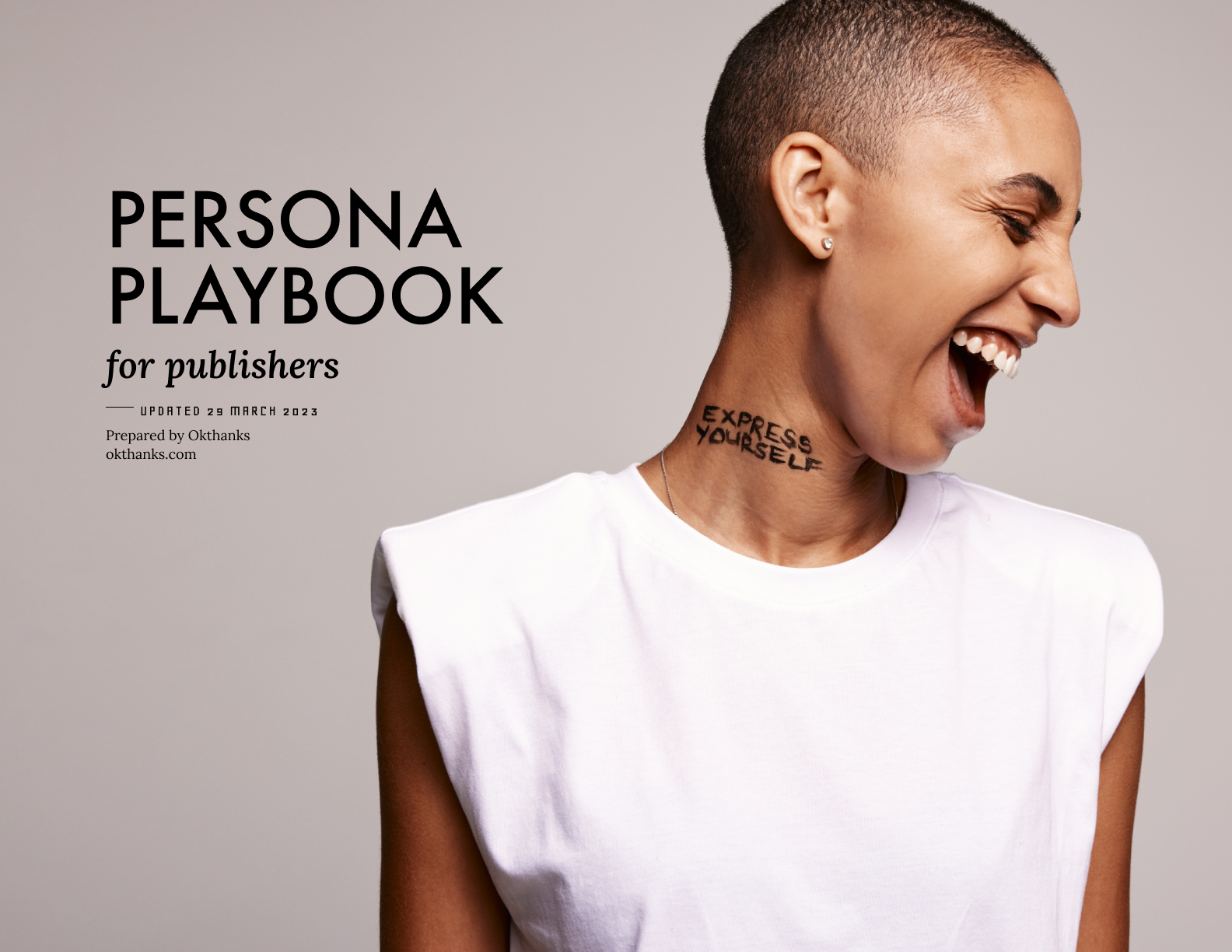
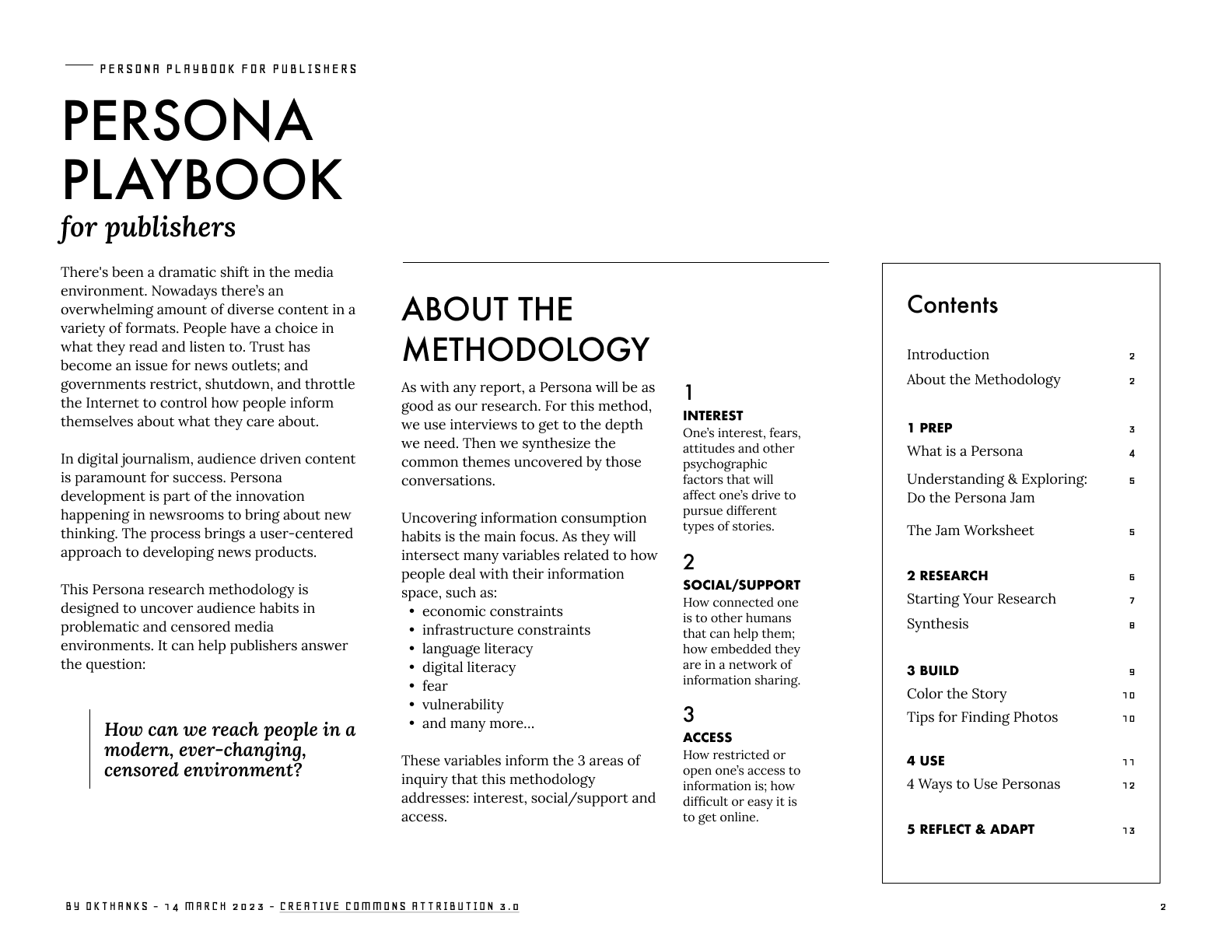
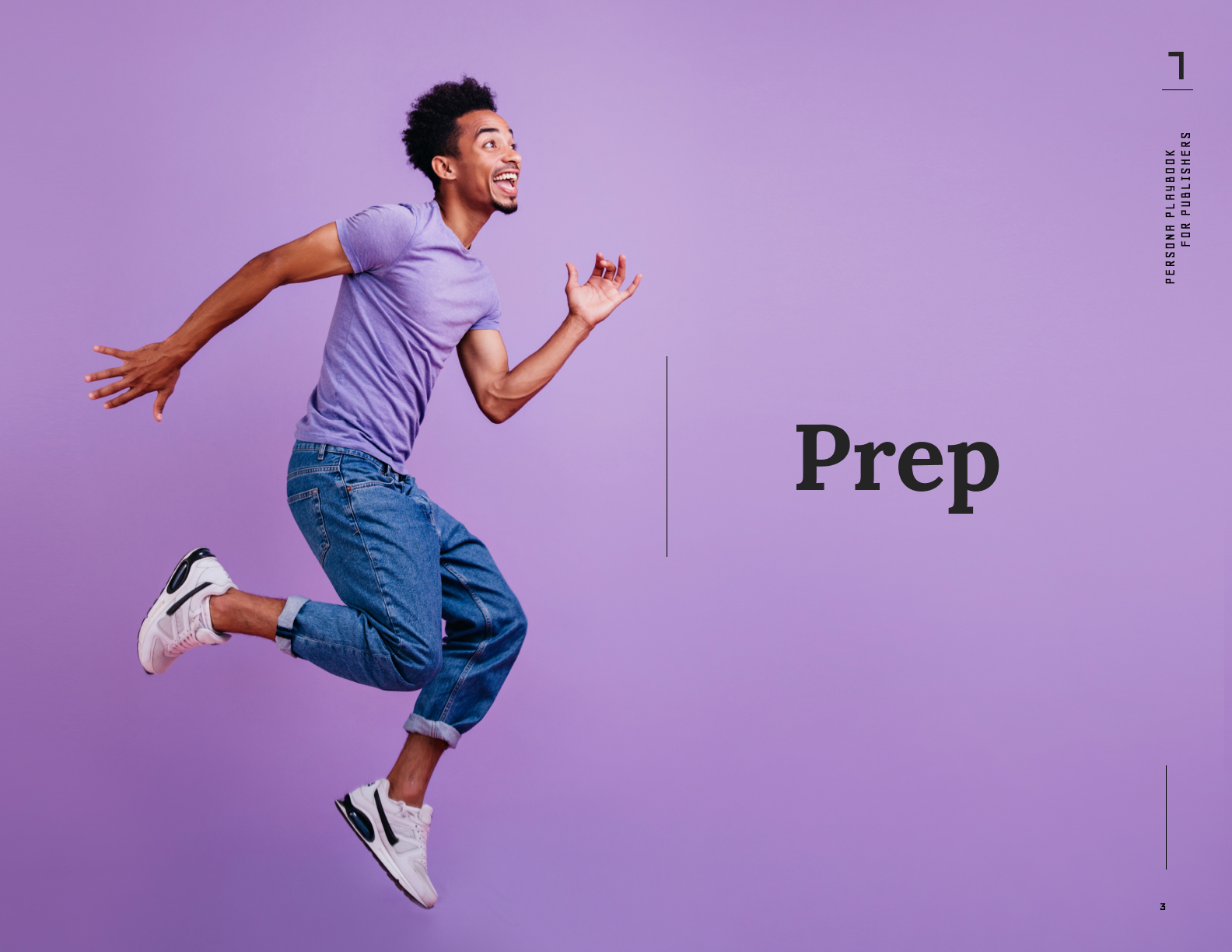
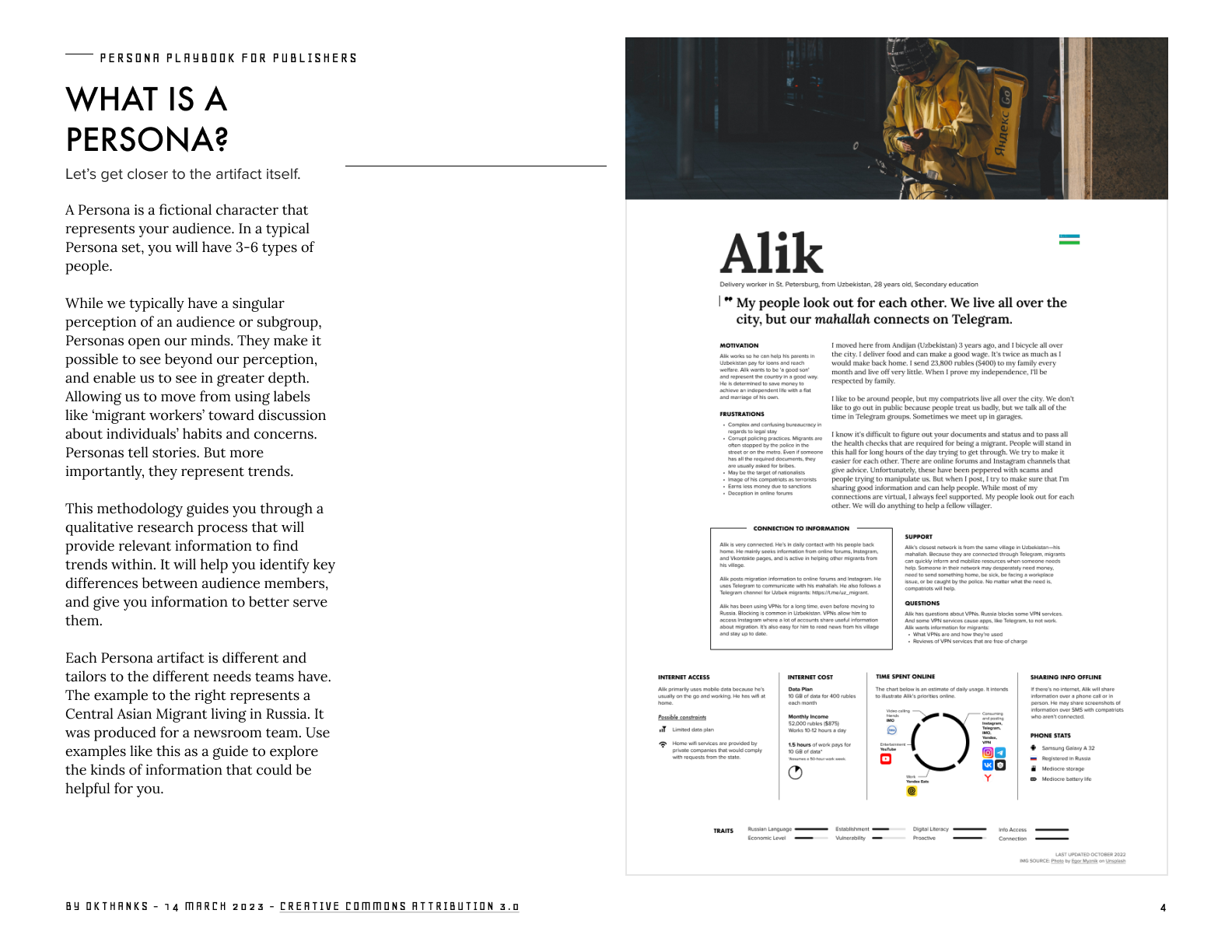
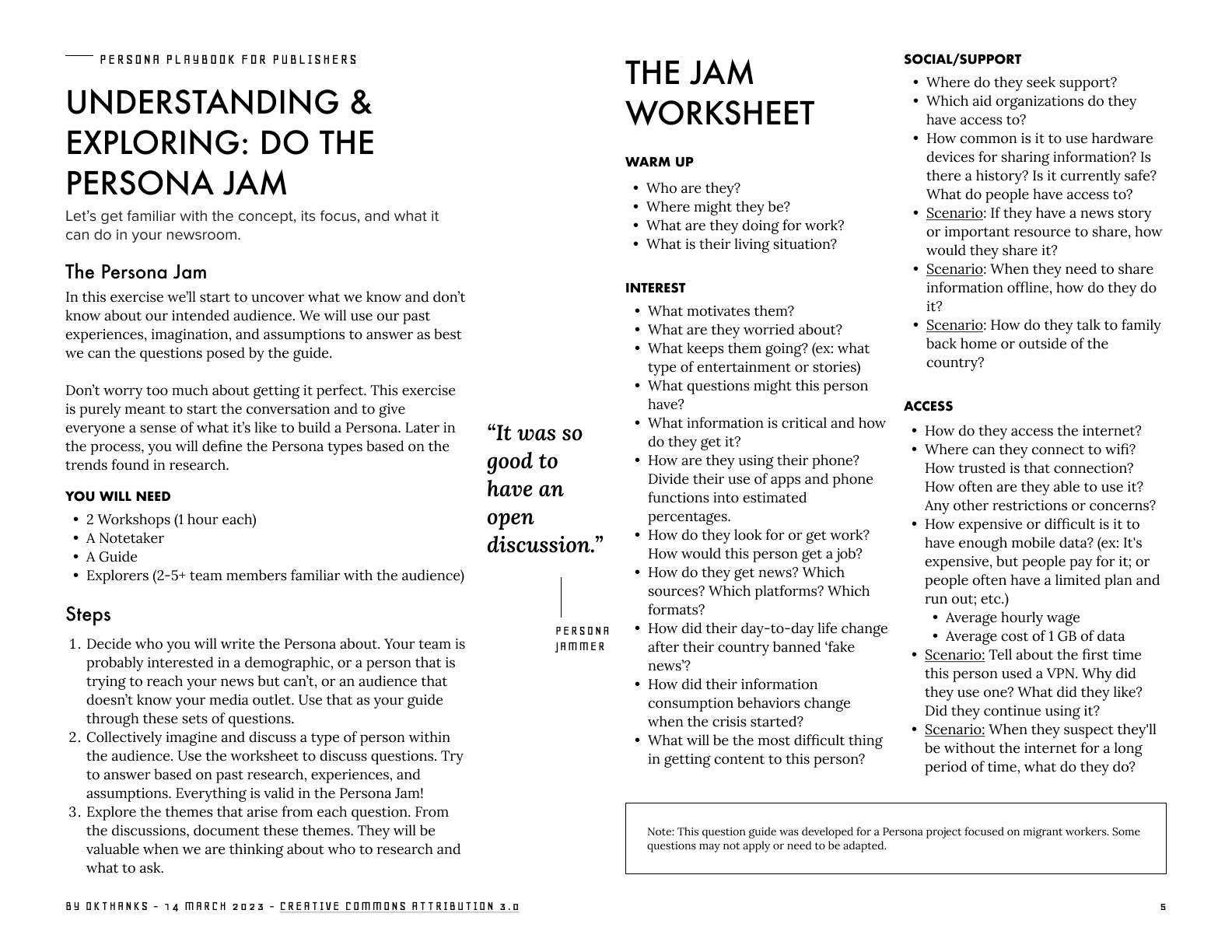
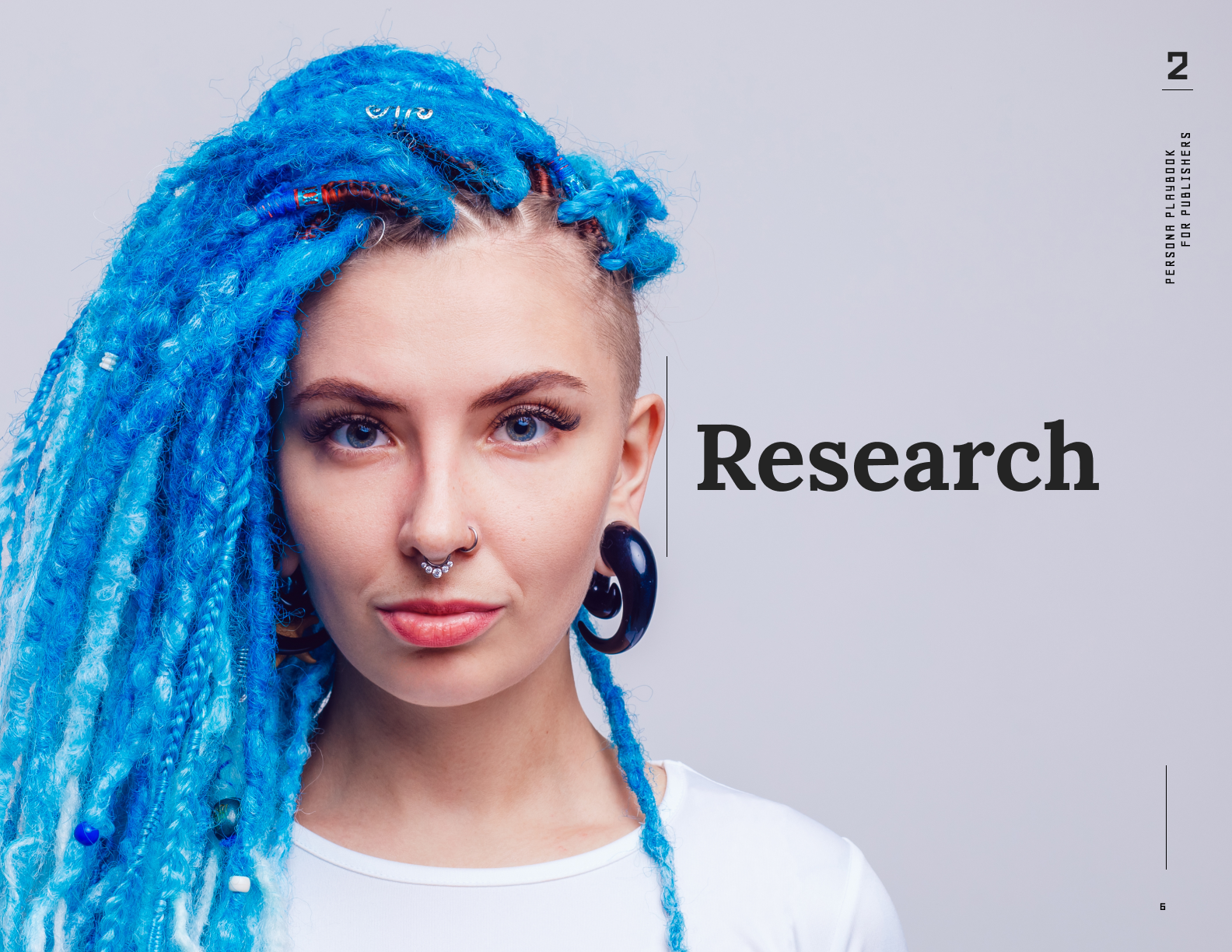
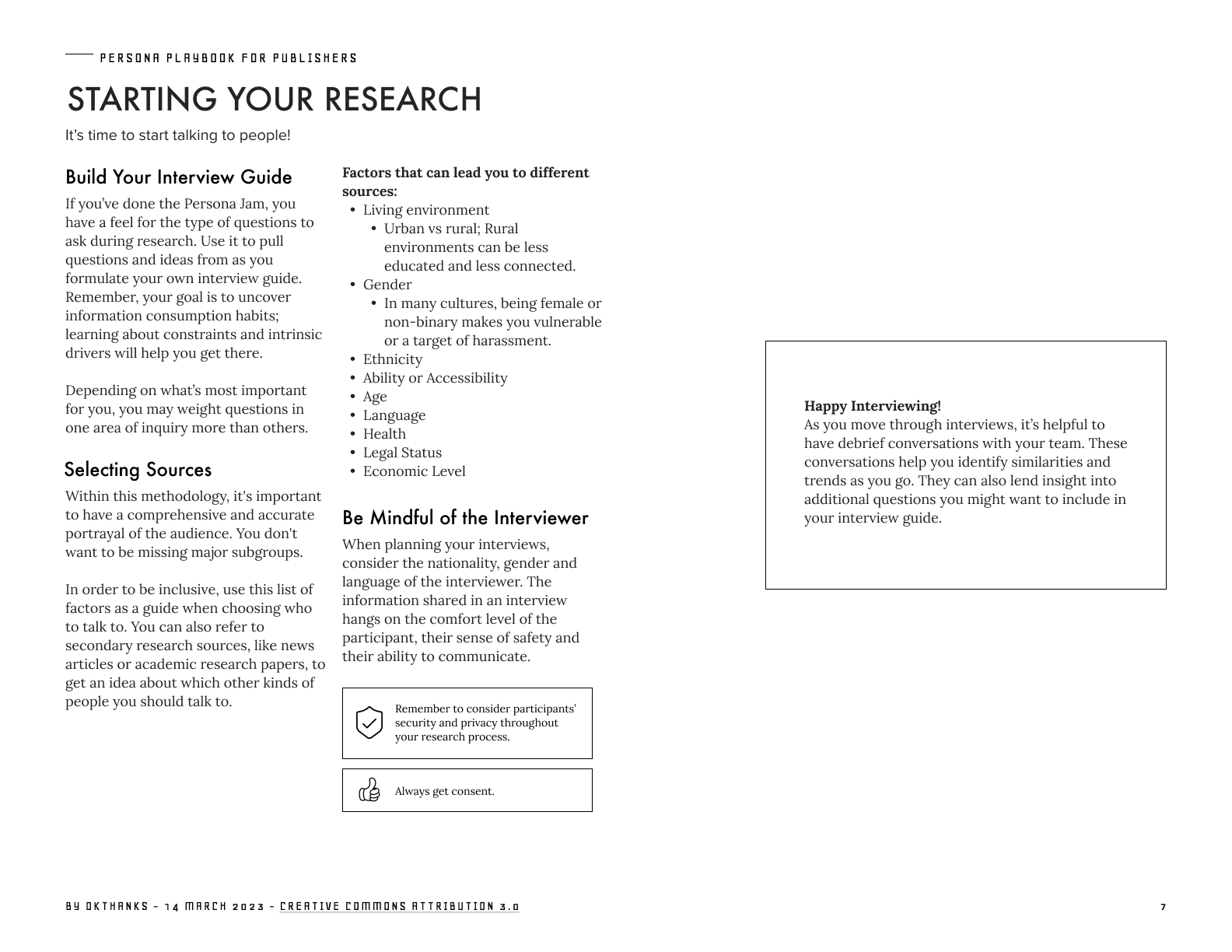

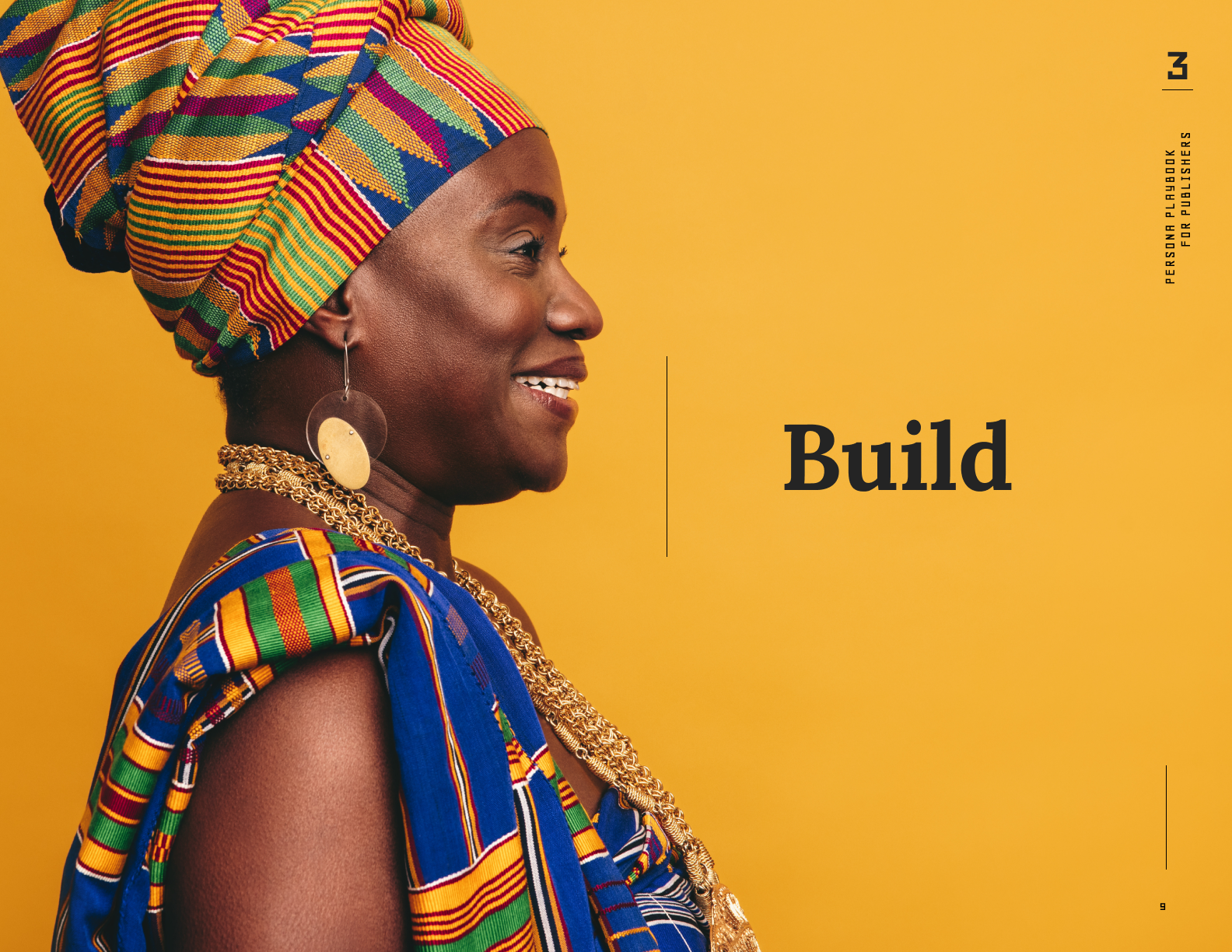
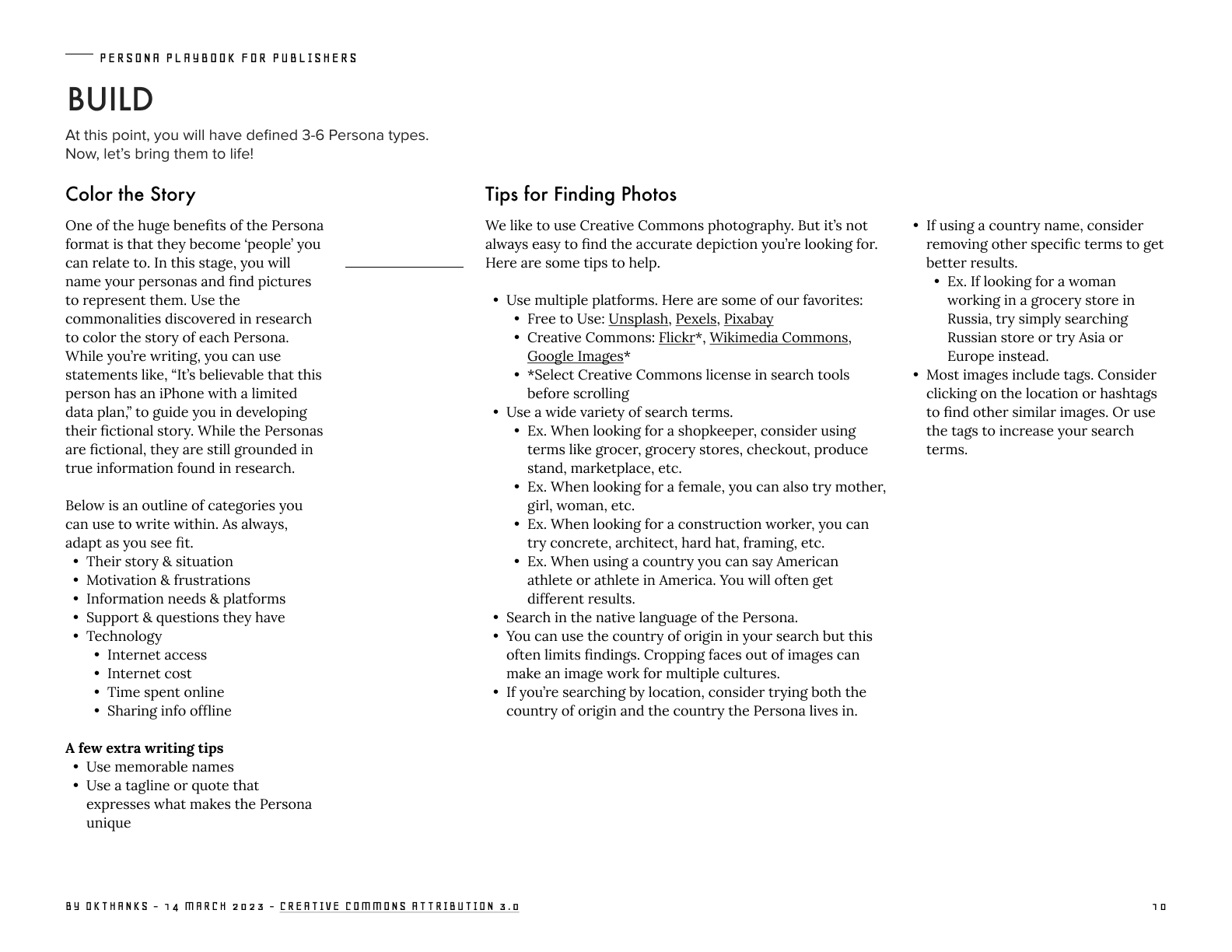
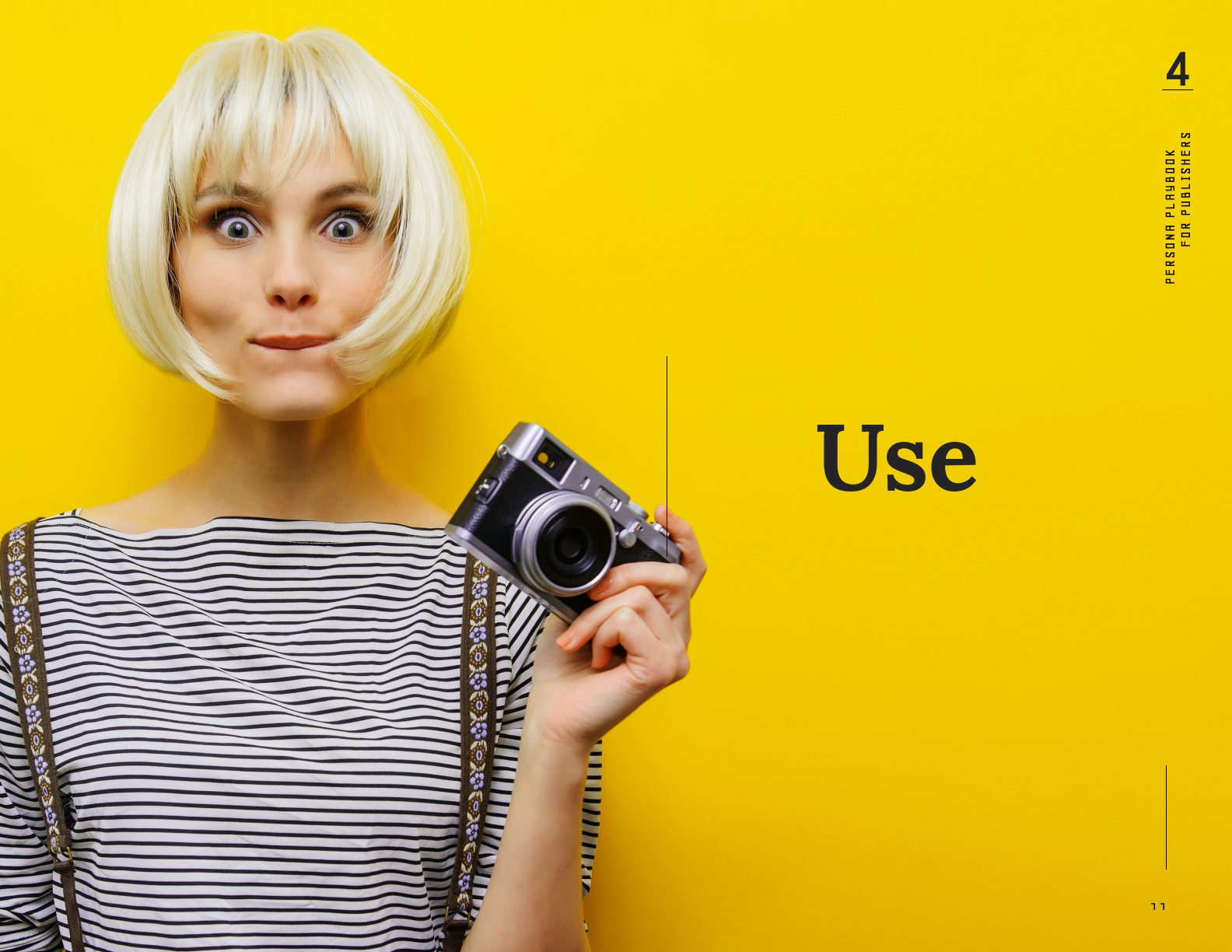
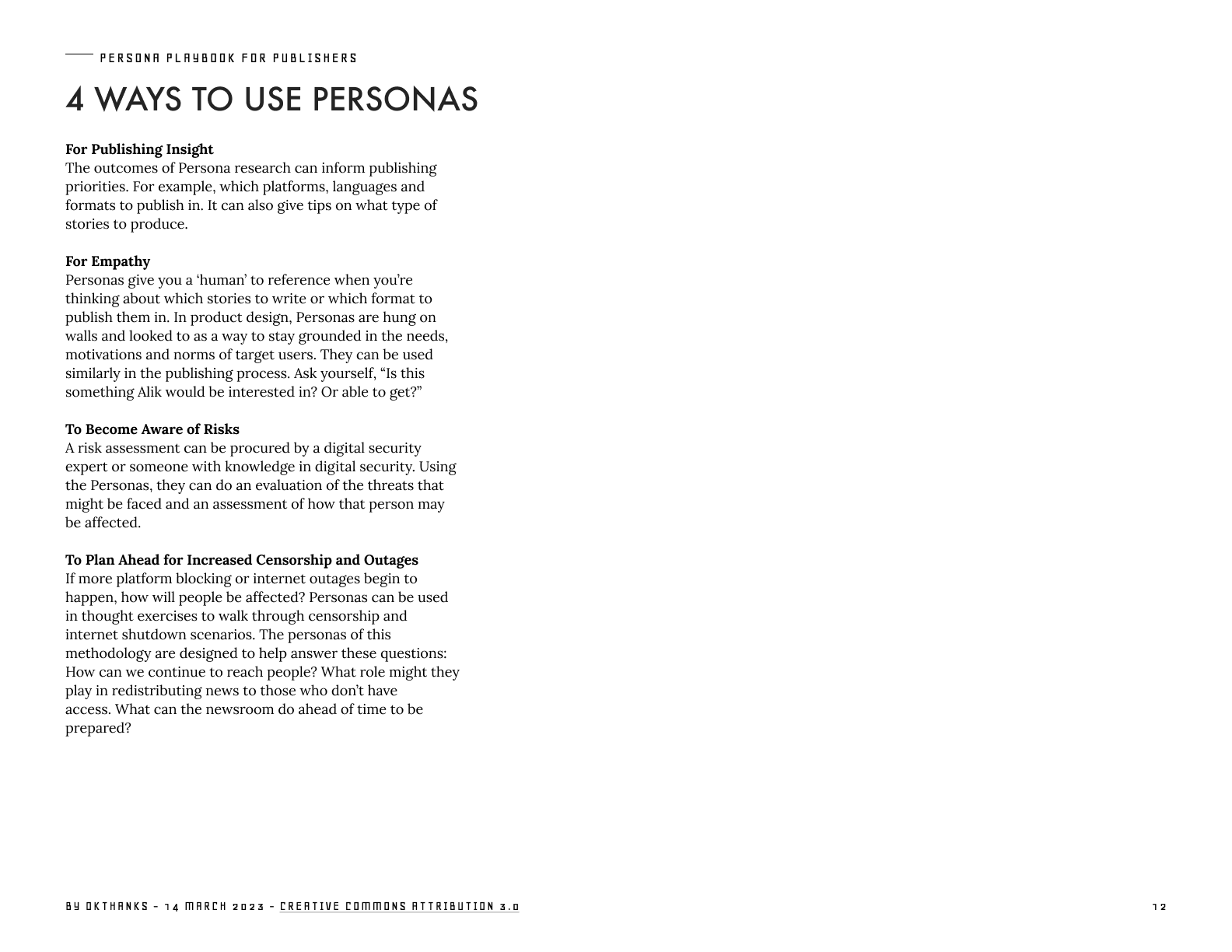
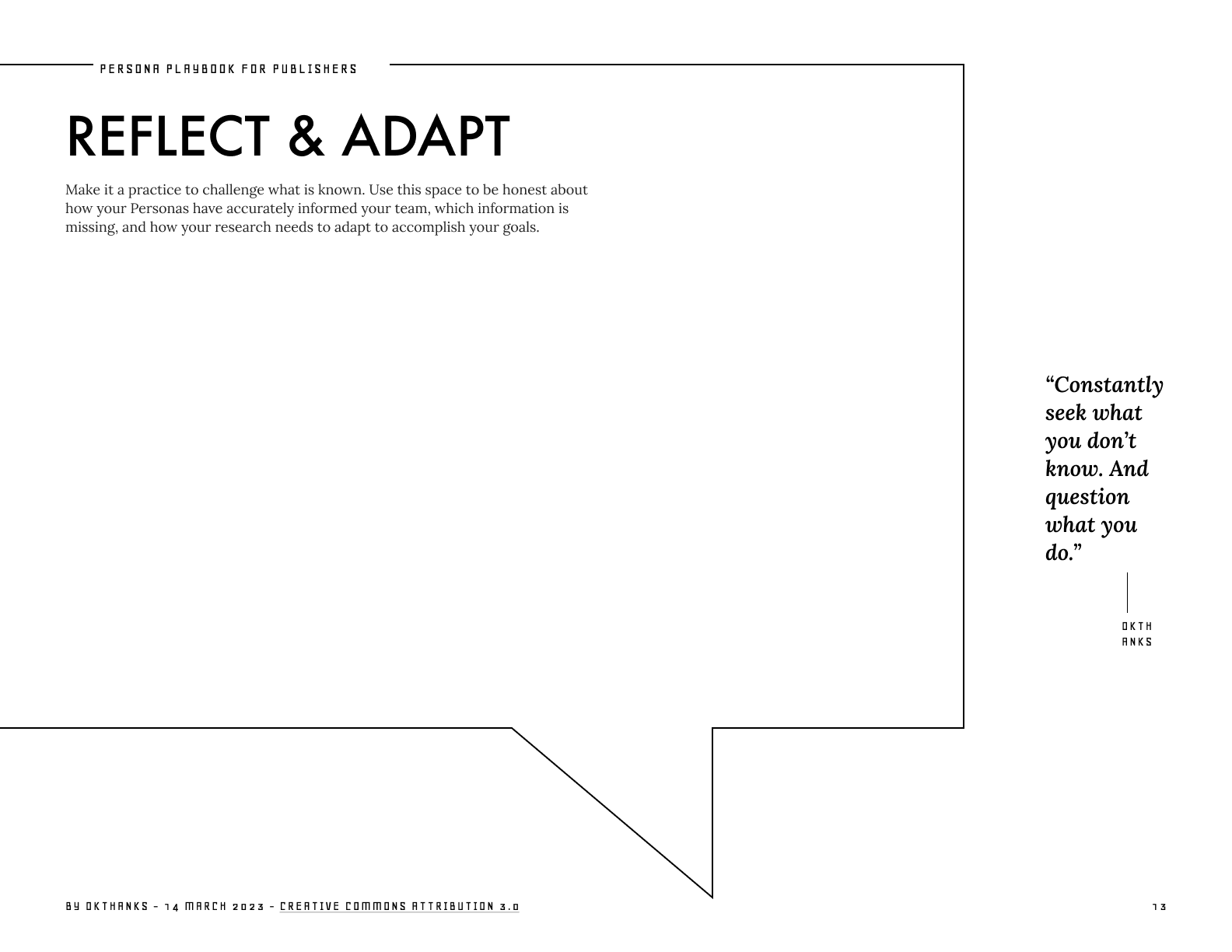
The persona research work was facilitated by Okthanks in collaboration with the Central Asian Migrant team at RFE/RL. It took place from July 15, 2022 to September 30, 2022. We are committed to benefitting the public domain. Resources are licensed under the CC BY-NC-SA 4.0 DEED: Attribution-NonCommercial-ShareAlike 4.0 International.
Photo Attributions: Khun Malinee-10 by UN Women Asia and the Pacific under CC BY-NC-ND 2.0; Photo by Egor Myznik on Unsplash; Photo by Pew Nguyen on Pexels; FV_Hanhikiven niemi_09112021 by Fennovoima under CC BY-NC-ND 2.0; Spice Girl, St. Petersburg by Driventutsia! under CC BY-NC-ND 2.0; Watermelons seller by Evgeni Zotov under CC BY-NC-ND 2.0; Photo by Marília Castelli on Unsplash

